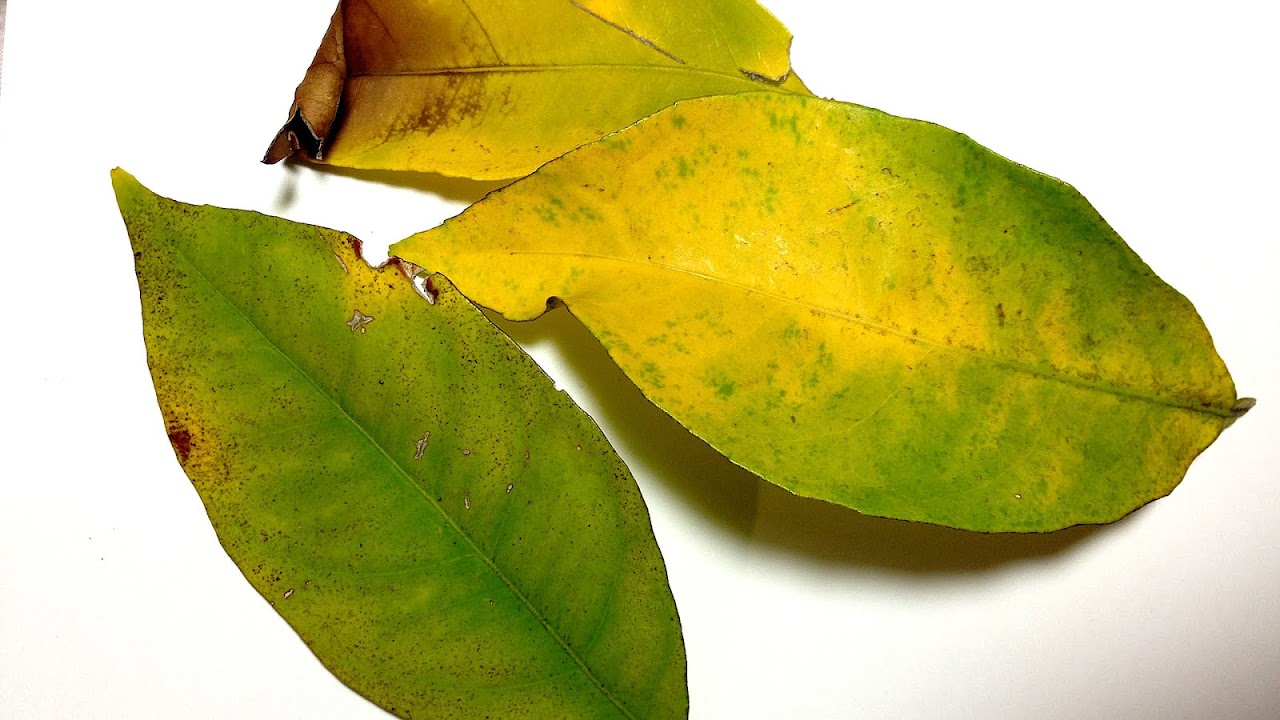
Iron (Fe) deficiency is a plant disorder also known as "lime-induced chlorosis". It can be confused with manganese deficiency. A deficiency in the soil is rare but iron can be unavailable for absorption if soil pH is not between about 5 and 6.5. A common problem is excessive alkalinity of the soil (the pH is above 6.5). Also, iron deficiency can develop if the soil is too waterlogged or has been overfertilised. Elements like calcium, zinc, manganese, phosphorus, or copper can tie up iron if they are present in high amounts.
Iron is needed to produce chlorophyll, hence its deficiency causes chlorosis. For example, iron is used in the active site of glutamyl-tRNA reductase, an enzyme needed for the formation of 5-Aminolevulinic acid which is a precursor of heme and chlorophyll.

Maps, Directions, and Place Reviews
Symptoms
Symptoms include leaves turning yellow or brown in the margins between the veins which may remain green, while young leaves may appear to be bleached. Fruit would be of poor quality and quantity. Any plant may be affected, but raspberries and pears are particularly susceptible, as well as most acid-loving plants such as azaleas and camellias.
Citrus Tree Leaves Turning Yellow Video
Treatment
Iron deficiency can be avoided by choosing appropriate soil for the growing conditions (e.g., avoid growing acid loving plants on lime soils), or by adding well-rotted manure or compost. If iron deficit chlorosis is suspected then check the pH of the soil with an appropriate test kit or instrument. Take a soil sample at surface and at depth. If the pH is over seven then consider soil remediation that will lower the pH toward the 6.5 - 7 range. Remediation includes: i) adding compost, manure, peat or similar organic matter (warning. Some retail blends of manure and compost have pH in the range 7 - 8 because of added lime. Read the MSDS if available. Beware of herbicide residues in manure. Source manure from a certified organic source.) ii) applying Ammonium Sulphate as a Nitrogen fertilizer (acidifying fertilizer due to decomposition of ammonium ion to nitrate in the soil and root zone) iii) applying elemental Sulphur to the soil (oxidizes over the course of months to produce sulphate/sulphite and lower pH). Note: adding acid directly e.g. sulphuric/hydrochloric/citric acid is dangerous as you may mobilize metal ions in the soil that are toxic and otherwise bound. Iron can be made available immediately to the plant by the use of iron sulphate or iron chelate compounds. Two common iron chelates are Fe EDTA and Fe EDDHA. Iron sulphate (Iron(II)_sulfate) and iron EDTA are only useful in soil up to PH 7.1 but they can be used as a foliar spray (Foliar_feeding). Iron EDDHA is useful up to PH 9 (highly alkaline) but must be applied to the soil and in the evening to avoid photodegradation. EDTA in the soil may mobilize Lead, EDDHA does not appear to.
Source of the article : Wikipedia


EmoticonEmoticon